The Alaska Maritime National Wildlife Refuge has prepared a “report card” on seabird breeding success in 2017:
 Loading...
Loading...
Additional observations were provided by John Piatt, Karl Stoltzfus, and Victoria Winne:
The Alaska Maritime National Wildlife Refuge has prepared a “report card” on seabird breeding success in 2017:
 Loading...
Loading...
Additional observations were provided by John Piatt, Karl Stoltzfus, and Victoria Winne:
George Matz has completed a very comprehensive report of the 2017 Kachemak Bay Shorebird Monitoring effort.
The 2017 report and data can be viewed / downloaded below:
Report:
 Loading...
Loading...
Diamond Creek is a great place to checkout songbirds, both along the road and on the trails. There is a trail that starts at the end of the road and winds its way down the bluff to the beach. Another trail, developed for mountain bikes, follows much of the road. On the beach check Cook Inlet for pelagic birds and shorebirds.
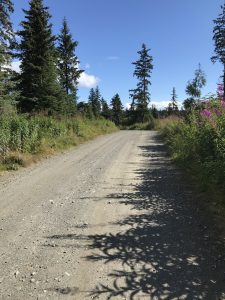
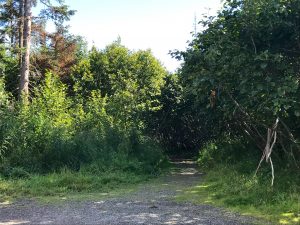
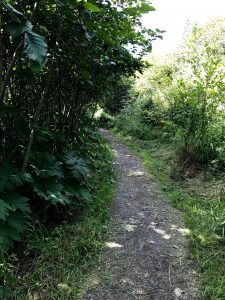
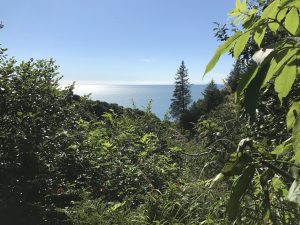
Directions:
Take the gravel road, located just west of the turnoff to Diamond Ridge Road. There is a parking area approximately 0.2 miles down the road, located on the left. Park here if you wish to walk the road, although there are other parking areas farther along the road. At the end of the road (approximately 0.8 miles) is parking and the trailhead for the Diamond Creek trail winding down the bluff to the beach. Please use caution when walking this trail.
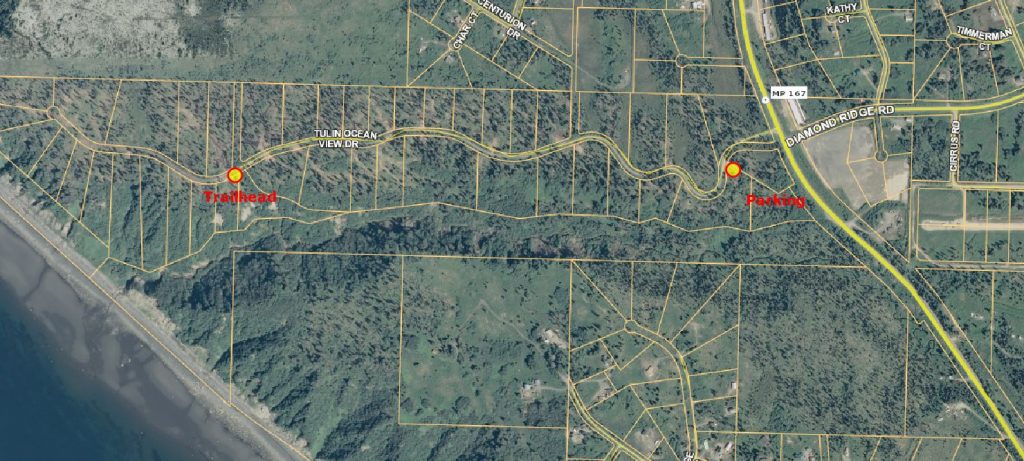
Birds Observed or Heard along the road and trails at Diamond Creek SRS:
IT’S A GREAT DAY TO BIRD
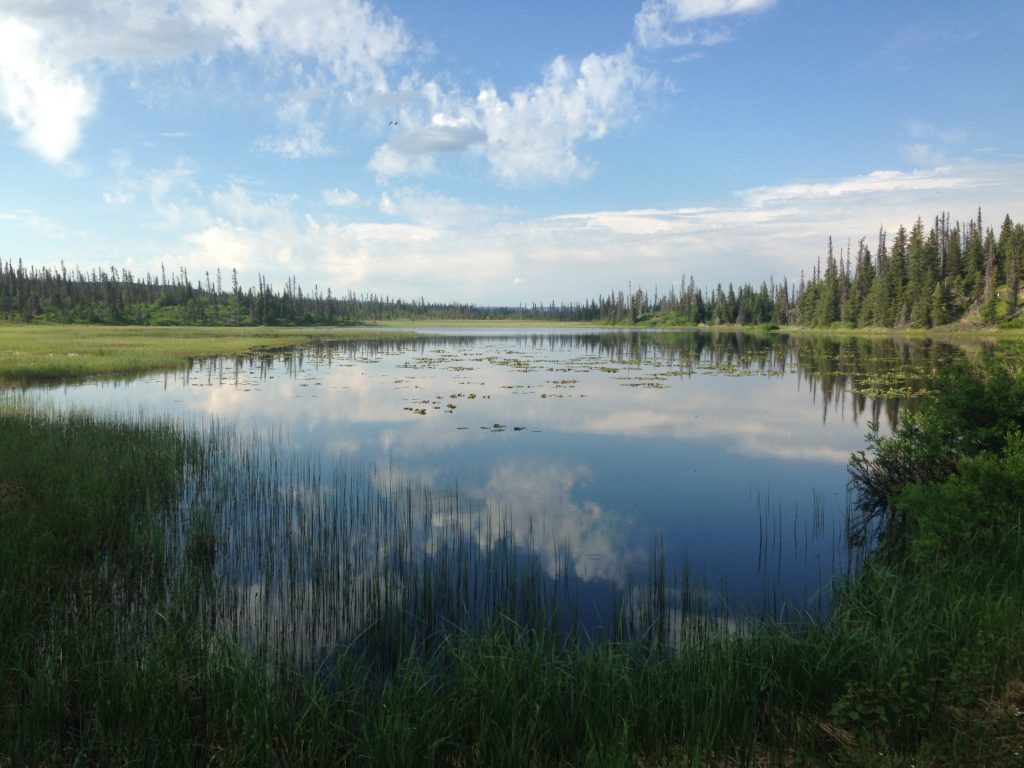
Eagle Lake is great birding for songbirds. Mew Gulls and a Pacific Loon pair nests at the lake. Several shorebird species also nest here: Yellowleg and Wilson’s Snipe. The Jaeger Bog hosts a nesting pair of dark morph Parasitic Jaegers. Both locations are great for songbirds. Merlins and Northern Harrier can occasionally be spotted here.
Directions:
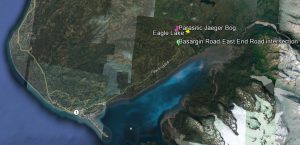
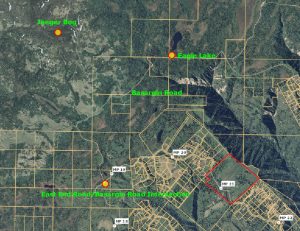
Eagle Lake: Drive approximately 18-19 miles out East End Road. Turn left on Basargin Road (aka Circle Lake Road), drive approximately 2.7 miles to the Y in the road. Go right. Drive another (approximate) 1.1miles. There will be a pull off on the side of the road. Park here. Walk down (northeast) the road about 100 feet or so. There will be a small trail on the left hand side of the road. This trail leads to the lake. The lake is less than ¼ mile off the road. Boots are necessary as this trail as it can be very wet and muddy.

Jaeger Bog: Drive approximately 18-19 miles out East End Road. Turn left on Basargin Road (aka Circle Lake Road), drive approximately 2.7 miles to the Y in the road. Go left. Drive 0.5 miles. There may be a closed gate. If so, park off the road and walk approximately 0.5 miles. There will be a large bog on the left hand side of the road. If the gate is open drive up the hill and down to a small pull-out at the bottom of the hill and on the right hand side of the road. Scope the bog on the left for Dark Morph Parasitic Jaegers that nest here annually. A variety of songbirds can be found here as well.
Be aware. This is bear and moose country.
Bird Species Observed or Heard at Eagle Lake
Bird Species Seen or Heard at Jaeger Bog and surrounding area:
Check out ebird for the latest complete list of birds seen at this location: http://ebird.org/ebird/ak/explore
It’s A Great Day to Bird

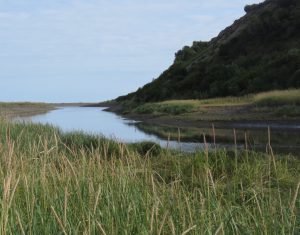
The Anchor Point Beach is a good beach for migrating (spring and outbound) shorebirds. Spring migration begins in late April and peak mid May (spring migration). Outbound migration begins late June and you can find shorebirds into September, and occasionally October.
The best place to see shorebirds is generally within 500 feet of the parking lot or at the mouth of the river, approximately 1.3 miles from the parking lot. Shorebirds can also be observed along the Anchor River. There is a road that parallels the river.
In the day-use parking lot and campground, a variety of songbirds can be observed during the spring and summer.
Seabirds can be observed on or flying over Cook Inlet. Outbound migration (July-September) can bring an abundance of seabirds, including Sooty Shearwaters, Tufted and Horned Puffins, and Murrelets (Marbled and Kittletz).
Be sure to also check out the wetlands next to the parking lot in the spring and fall for waterfowl and shorebirds.
Be aware of the tides. Tides in Alaska can be extreme at times. It is always best to visit the beach during an outgoing tide. Shorebirds are best observed when the tide is between 12-14 feet.
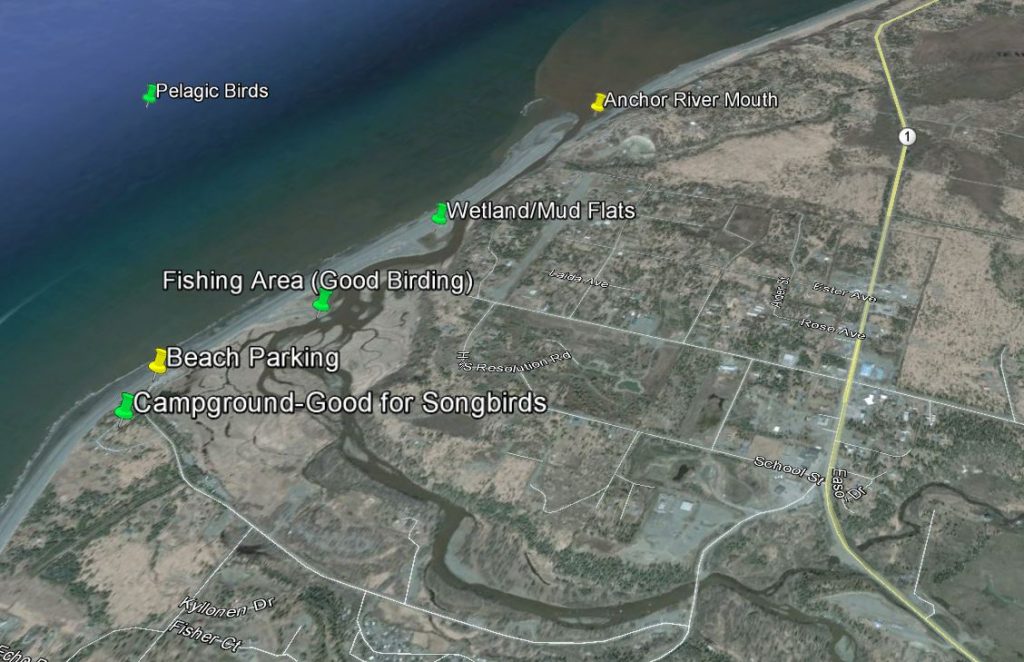
Directions:
From Homer take the Sterling Highway to Anchor Point. Turn left on to the Old Sterling Highway (left), drive over the bridge, and take the first right (Anchor Point Road). Drive this road to the end and park in the parking lot. A $5.00 parking fee is charged.

List of Bird Species Observed at Anchor Point Beach/Anchor River
Over 170 species have been observed at the parking long, along the Anchor River, over Cook Inlet, or along the beach at Anchor Point throughout the year.
Check the latest ebird for a listing of sightings: http://ebird.org/content/ak/
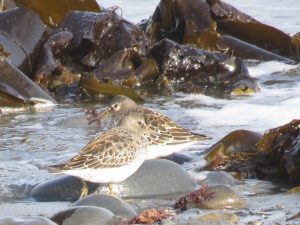
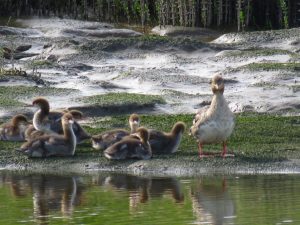
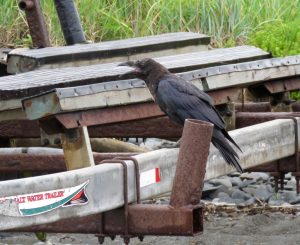
IT’S A GREAT DAY TO BIRD
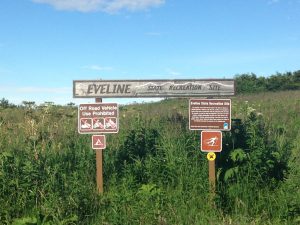
This is a small, 80-acre state recreation site location out East End Road near McNeil Canyon. The park offers several different summer trails (and winter ski/snowshoe trails, as well), with no trail longer than 1.25 miles. During the summer there are a variety of wildflowers in the meadows and along the trails. Not to be missed.
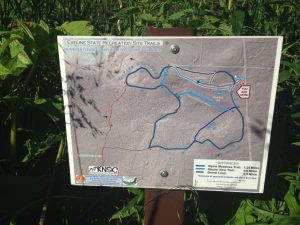
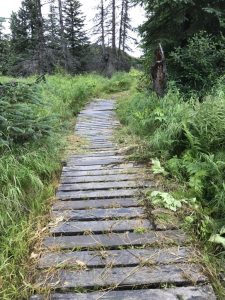
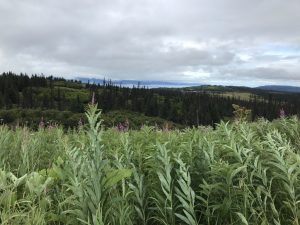
More than 45 bird species have been spotted in the park. In the spring and summer, the best time to bird is during the morning hours. Key breeding species include: Golden-crowned Sparrow, Fox Sparrow, Savannah Sparrow, Alder Flycatcher, and Orange-crowned Warbler.
Remember this is bear and moose country. Be Aware.
Directions:
From East End Road in Homer drive approximately 13.5 miles to Alpine Meadows Road. There will be a state park sign just before the road. Turn left onto Alpine Meadows and drive approximately ½ mile to the park. There is a small parking lot on the left-hand side of the road.
Bird List:
Please note that many of these species are uncommon to rare. Check the latest ebird for the most recent sightings: http://ebird.org/content/ak/
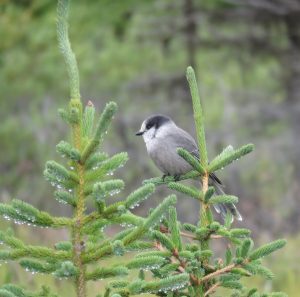
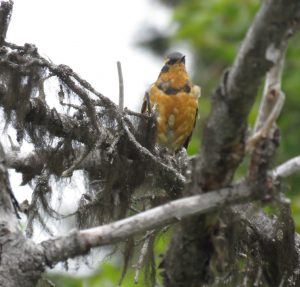

CHRISTMAS BIRD COUNT
FINAL REPORT
Forty two volunteers participated in Homer’s annual Audubon Christmas Bird Count, five watching feeders in their own yard and the others out in the field. The weather was not too cooperative with icy walking, limited visibility for most of the day and resulting decreased available daylight hours, but many were expressing the same thought, “We’ve seen much worse!”
A total of 64 species were seen on the Count Day (Saturday, December 17). Highlights included a WHITE-THROATED SPARROW found at a feeder near Crittenden St., a BELTED KINGFISHER found in Beluga Slough near the culvert from the lake, and a single SANDERLING found among the ROCK SANDPIPERS on the Homer Spit. CHUKARS, a colorful gamebird related to a pheasant, were found at a residence out East End Rd, though possibly may not count as an official species due to their probable domestic escapee status.
Three additional species were seen during the Count Week (three days before and three days after Count Day): SNOW BUNTING, MERLIN, and GREAT-HORNED OWL.
There were 10,492 individual birds counted. Most numerous species were MALLARDS (3422), ROCK SANDPIPERS (1700), and COMMON GOLDENEYE (820). Only one COMMON MURRE was seen this year, compared to the die-off that was developing at this time last year when over 200 were counted. (In winter, murres are typically out at sea instead of here in the bay.)
For a complete report of species and numbers seen, check the Kachemak Bay Birders’ website, kachemakbaybirders.org.
A big thanks to all the volunteers who participated, to the Alaska Maritime National Wildlife Refuge for letting us use their space for our meeting and potluck, the local Kachemak Bay Birders, and to Dave Erikson for coordinating yet another Christmas Bird Count. It was indeed a Great Day to Bird!


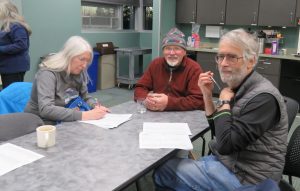

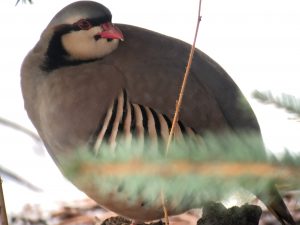
The CHRISTMAS BIRD COUNT is the longest-running citizen science project in our nation, and in Homer it is always held on the first Saturday in the window (Dec. 14th to Jan. 5th). This year it will be December 17th in Homer.
The center of the 15-mile-diameter count circle is the intersection of Kachemak Drive and the Spit Rd. The circle extends east to Fritz Creek, south past the end of the Spit, west to the mouth of Diamond Creek and to the north where there are few roads. We do not go out in boats for our count.
Participants meet at 8:30 am at IOVC for coffee/tea/breakfast foods, get assigned to teams and areas, and then go out to count all the daylight hours. At 4:30 teams return and compile results and enjoy a warm potluck supper. Some participants also count what they see coming to their feeders/yard on the count day.
Each year on the Thursday before the count, Dave Erikson teaches a class on “Winter Bird Identification”. This class is valuable for new birders as well as being an excellent opportunity for more experienced birders to brush up on what birds are in Homer in the winter.
During the COUNT WEEK, which is three days before and three days after the CHRISTMAS BIRD COUNT additional species are also noted.
There were 131 species seen at the Festival this year. This list is on the Kachemak Bay Birders’ website http://kachemakbaybirders.org/.
If there are other species that you are sure were seen during the Festival, please let me know. I did not get many reports of raptors and woodpeckers and some others possibly seen.
A RED KNOT was seen at the end of the Spit by the Harbor and in Mud Bay on.
BAR-TAILED and MARBLED GODWITS were seen in several places on the Spit. (No Hudsonians were seen here during the Festival but were at the Kasilof River.)
RUFOUS HUMMINGBIRDS were seen on the 4th out East End Rd about 6 miles and then again at the Lighthouse Village Platform and in Beluga Slough the next day.
A KING EIDER pair was seen off “the bluff” west of Homer on the 4th. Great photographs posted.
A WESTERN WOOD-PEWEE was seen at the end of the FAA Rd. by the lower platform on the Lake on the 6th.
RING-NECKED DUCKS, GADWALL, and CANVASBACKS were seen in Beluga Lake.
A THAYER’S GULL was seen at the Lighthouse Village, Green Timbers and a few other places. Also an An ICELAND GULL was seen near Green Timbers on the 6th.
GREAT BLUE HERONS were seen on the 4th near Bishop’s Beach.
CASPIAN TERNS were seen on the 6th in Mud Bay.
An OSPREY was seen near Beluga Slough/Bishop’s Beach before the Festival and again on the 7th.
There was a report of BRISTLE-THIGHED CURLEWS at Anchor Point on the 6th but attempts to refind them were unsuccessful.
Always nice during the Festival to have some swallows back, HERMIT THRUSH, ORANGE-CROWNED and YELLOW-RUMPED WARBLERS, terns, and TUFTED PUFFIN. And this year a hummingbird and a flycatcher, too! The Festival means many happy hours being out birding and enjoying the beauty and diversity of all those wonderful birds! It was a Great Festival to Bird (as our motto tells us)!
Post-Festival
Shorebirds still arriving since the Festival…
The following is an amazing report from Toby and Laura Burke:
“On Wednesday evening, May 10, between 5 and 6 PM, on the falling tide in the greater Mud Bay area of Homer we encountered the largest aggregation of shorebirds we’ve ever seen in 12 years of birding the Kenai Peninsula… During the previously 12 years the most shorebirds we had ever counted in the larger Mud Bay area approached 15,000. Wednesday evening from the intertidal mudflats from below the airport, across the east side of the Mud Bay spit, across the mouth of the inner Mud Bay, along the gravel bars working south, and toward Green Timbers – a distance of 1.4 miles – where we roughly stood nearest the center – we counted 150,000 WESTERN SANDPIPERS and 6,000 DUNLIN along this shoreline with peak numbers between 5:30 to 5:45 PM.”
View or download the complete festival species checklist:
Homer/Kachemak Bay Festival Bird Report: 5-6-17
Kachemak Bay/Homer Festival Bird Report: 5-5-17 (Friday)
Another nice sunny day here in Homer! Many exciting new birds were found today: CANVASBACK and RING-NECKED DUCK in Beluga Lake this morning, TUFTED PUFFIN at Gull Island, and ALEUTIAN TERN at Green Timbers, and a THAYER’S GULL. The KING EIDER from yesterday was confirmed with a beautiful photo, checkout our website if you haven’t seen it. It was a Great Day to Bird!
King Eiders – photo by Max Schwenne
Has anyone seen a BLACK OYSTERCATCHER or an EURASIAN WIGEON? So far no reports of them during the Festival. Some reported a few days earlier…
Western Sandpiper/Dunlin/Least flock in Mud Bay was estimated to be ~4-5,000 today at 8:00 am; later estimate near noon was ~1500-2000.
Mud Bay
SEMIPALMATED SANDPIPER, MARBLED GODWIT, BAR-TAILED GODWIT, WHIMBREL, WESTERN SANDPIPERS, DUNLIN, LEAST SANDPIPER, SEMIPALMATED PLOVER, PACIFIC GOLDEN PLOVER, BLACK-BELLIED PLOVER, SHORT-BILLED DOWITCHER, BONAPARTE’S GULL, BRANT, GREATER YELLOWLEGS, NORTHERN PINTAIL, GREATER SCAUP, HORNED GREBE, BLACK-LEGGED KITTIWAKE, MEW GULL, HERRING GULL, GLAUCOUS GULL, SAVANNAH SPARROW, AMERICAN WIGEON, MALLARD, NORTHERN SHOVELER, GREEN-WINGED TEAL.
Lighthouse Village
ORANGE-CROWNED WARBLER, GOLDEN-CROWNED SPARROW, FOX SPARROW, GREATER YELLOWLEGS, LEAST SANDPIPER, WESTERN SANDPIPERS, DUNLIN, GREEN-WINGED TEAL, AMERICAN WIDGEON, NORTHERN PINTAILS, MALLARDS, SANDHILL CRANES.
Green Timbers/Louie’s Lagoon (mid-spit)
LONG-TAILED DUCK, RED-THROATED LOON, NORTHERN SHOVELER, BONAPARTE’S GULL, COMMON REDPOLL, SEMIPALMATED PLOVER, PACIFIC GOLDEN PLOVER, BLACK-BELLIED PLOVER,WHIMBREL, SURFBIRDS, BLACK TURNSTONE, LEAST SANDPIPER, SEMIPALMATED SANDPIPER, DUNLIN, DOWITCHER (sp), BRANT, WESTERN SANDPIPERS, BLACK-BELLIED PLOVER, LEAST SANDPIPER, ARCTIC TERN, AMERICAN PIPIT, SAVANNAH SPARROW, FOX SPARROW, SONG SPARROW.
End of the Spit
HERRING GULL, BLACK-LEGGED KITTIWAKES, RED-NECKED GREBE, PELAGIC CORMORANT, PEREGRINE FALCON, SURFBIRDS on Harbor Jetty with Turnstones, RUDDY TURNSTONES, BLACK TURNSTONES, WESTERN SANDPIPERS, WANDERING TATTLERS (in Harbor), SONG SPARROWS, SAVANNAH SPARROWS, ROCK PIGEONS, NORTHWESTERN CROWS, BALD EAGLES,
Out on the Bay
TUFTED PUFFIN on Gull Island, SURFBIRDS, BLACK TURNSTONES, HORNED GREBE, SCOTERS (WHITE-WINGED, SURF, BLACK), RED-NECKED PHALLAROPE, PIGEON GUILLEMOT, COMMON MURRES, HARLEQUIN DUCKS, LONG-TAILED DUCK, COMMON LOON, PACIFIC LOONPELAGIC CORMORANT, BLACK-LEGGED KITTIWAKES.
Beluga Slough and trail down from Islands and Oceans
ORANGE-CROWNED WARBLER, FOX SPARROW, AMERICAN ROBIN, AMERICAN WIGEON, NORTHERN PINTAIL, WESTERN SANDPIPER, NORTHERN SOVELER, BALD EAGLE, BLACK-BILLED MAGPIE, NORTHWESTERN CROW, GOLDEN-CROWNED SPARROW, SANDHILL CRANE.
Beluga Lake Lower Platform
TRUMPETER SWAN pair, GREATER WHITE-FRONTED GEESE, CACKLING GEESE, CANADA GEESE, RED-NECKED GREBE, BUFFLEHEAD, MALLARD, GREEN-WINGED TEAL, NORTHERN PINTAIL, RING-NECKED DUCK, CANVASBACK, NORTHERN SHOVELER, AMERICAN WIGEON, GREATER SCAUP, WILSON’S SNIPE, RED-NECKED PHALAROPE and LEAST SANDPIPER (both flying), MEW GULL, SANDHILL CRANE (heard) NORTHERN HARRIER, BALD EAGLE, BLACK-BILLED MAGPIE, BOREAL CHICKADEE, RUBY-CROWNED KINGLET, GOLDEN-CROWNED KINGLET, AMERICAN ROBIN, VARIED THRUSH, AMERICAN PIPIT, WHITE-WINGED CROSSBILL, DARK-EYTED JUNCO, LINCOLN’S SPARROW, BROWN CREEPER, GOLDEN-CROWNED SPARROW, COMMON RAVEN, GREATER YELLOWLEGS.
Calvin and Coyle Trail
BROWN CREEPER, PINE GROSSBEAK, GOLDEN-CROWNED KINGLET, NORTHERN GOSHAWK, RED-BREASTED NUTHATCH, AMERICAN ROBIN, VARIED THRUSH,.
Anchor River
GREATER WHITE-FRONTED GOOSE, NORTHERN SHOVELER, CACKLING GEESE, GREEN-WINGED TEAL,
HARLEQUIN DUCK, WHITE-WINGED SCOTER, LONG-TAILED DUCK, COMMON MERGANSER, RED-BREASTED MERGANSER, PACIFIC LOON, RED-NECKED GREBE, DOUBLE-CRESTED CORMORANT,BALD EAGLE, BLACK-BELLIED PLOVER, WHIMBREL, RUDDY TURNSTONE, DUNLIN, MARBLED MURRELET, NORTHWESTERN CROW, AMERICAN WIGEON, MALLARD, GREATER SCAUP, SURF SCOTER, COMMON LOON, PELAGIC CORMORANT, SANDHILL CRANE, PACIFIC GOLDEN-PLOVER, SEMIPALMATED PLOVER, BLACK TURNSTONE, LEAST SANDPIPER, COMMON MURRE, PIGEON GUILLEMOT, BLACK-LEGGED KITTIWAKE, MEW GULL, GLAUCOUS-WINGED GULL, BELTED KINGFISHER, BLACK-BILLED MAGPIE, AMERICAN PIPIT, LAPLAND LONGSPUR, FOX SPARROW, SAVANNAH SPARROW.
Kachemak Bay/Homer Festival Bird Report: 5-4-17 (Newest in BOLD)
Nice sunny day and not even much breeze until noontime. Many good birds (of course they’re all good birds) and many happy birders at our Festival. Estimated Western Sandpiper/Dunlin flock in Mud Bay estimated to be ~1500 today.
Super fantastic Festival birds:
A RUFOUS HUMMINGBIRD was reported out East End Rd., with photos!
GREAT BLUE HERON in town near Bishop’s Beach on Jenny Way.
Unconfirmed report of a KING EIDER seen from a boat off “The Bluff” west of town, but unconfirmed at this time.
Mud Bay
SURFBIRDS, MARBLED GODWIT, BAR-TAILED GODWIT, WHIMBREL, WESTERN SANDPIPERS, DUNLIN, SEMIPALMATED PLOVER, PACIFIC GOLDEN PLOVER, BLACK-BELLIED PLOVER, SHORT-BILLED DOWITCHER, BONAPARTE’S GULL, BRANT, GREATER YELLOWLEGS, LEAST SANDPIPER.
Lighthouse Village
GREATER WHITE-FRONTED GEESE, SEMIPALMATED SANDPIPER, GOLDEN-CROWNED SPARROW, FOX SPARROW, RED-BREASTED NUTHATCH, SEMIPALMATED PLOVER, GREATER YELLOWLEGS, LEAST SANDPIPER, VIOLET-GREEN SWALLOWS, GREEN-WINGED TEAL, AMERICAN WIDGEON, NORTHERN PINTAILS, MALLARDS.
Green Timbers/Louie’s Lagoon (mid-spit)
COMMON EIDER and KITTLITZ’S MURRELET (scoped to the west), RED-THROATED LOON, NORTHERN SHOVELER, BONAPARTE’S GULL, COMMON REDPOLL, SEMIPALMATED PLOVER, PACIFIC GOLDEN PLOVER, BLACK-BELLIED PLOVER,WHIMBREL, SURFBIRDS, BLACK TURNSTONE, LEAST SANDPIPER, SEMIPALMATED SANDPIPER, DUNLIN, DOWITCHER (sp), BRANT, WESTERN SANDPIPERS, BLACK-BELLIED PLOVER, LEAST SANDPIPER, ARCTIC TERN, AMERICAN PIPIT, SAVANNAH SPARROW, FOX SPARROW, SONG SPARROW.
End of the Spit
PEREGRINE FALCON, SURFBIRDS (150 on Harbor Jetty with Turnstones), RUDDY TURNSTONES, BLACK TURNSTONES, WESTERN SANDPIPERS, WANDERING TATTLERS (in Harbor), SONG SPARROWS, SAVANNAH SPARROWS, ROCK PIGEONS, NORTHWESTERN CROWS.
Out on the Bay
SURFBIRDS (800), BLACK TURNSTONES, HORNED GREBE, SCOTERS (WHITE-WINGED, SURF, BLACK) RED-NECKED PHALLAROPE (200), PIGEON GUILLEMOT, COMMON MURRES (most in breeding plumage), HARLEQUIN DUCKS, LONG-TAILED DUCK, COMMON LOON, PELAGIC CORMORANT, BLACK-LEGGED KITTIWAKES.
Reports of 5-8 BALD EAGLES on Gull Island, another of 15 in the area!
Beluga Slough
BELTED KINGFISHER, GREATER YELLOWLEGS, WESTERN SANDPIPERS, DUNLIN, SEMIPALMATED PLOVER, SHORT-BILLED DOWITCHERS (sp.), GREATER WHITE-FRONTED GEESE, CACKLING GEESE, VIOLET-GREEN SWALLOWS, AMERICAN WIGEON, GREEN-WINGED TEAL.
Beluga Lake Platforms
TRUMPETER SWAN pair apparently nesting across the water, RUBY-CROWNED KINGLETS and DARK-EYED JUNCOS singing away, also PACIFIC WRENS, GOLDEN-CROWNED KINGLETS in the area. VARIED THRUSH, WILSON’S SNIPE.
(Coyote seen at noon across in the grassy area.)
Calvin and Coyle Trail
NORTHERN GOSHAWK, BROWN CREEPER, PINE GROSSBEAK, GOLDEN-CROWNED KINGLET
Other parts of town…
YELLOW-RUMPED WARBLER at Seaside Farms. RING-NECKED PHEASANT nearby.
Anchor River
SNOW GEESE (3), CACKLING GEESE, PACIFIC GOLDEN PLOVER, BELTED KINGFISHER, DUNLIN, BLACK-BELLIED PLOVER, WHIMBREL, GREATER YELLOWLEGS, RUDDY TURNSTONE, BLACK TURNSTONE, SHORT-BILLED DOWITCHER, LEAST SANDPIPER, WESTERN SANDPIPER, ARCTIC TERN, VIOLET-GREEN SWALLOW.
Kachemak Bay Shorebird Festival Bird Report: 5-3-17 9:00 pm—UPDATE
Pair of GREAT BLUE HERON in Beluga Slough (reported this evening).
YELLOW-RUMPED WARBLERS at Seaside Farms (5 miles out East End Rd.).
Omitted earlier but seen on Wednesday: LAPLAND LONGSPUR (3) at Green Timbers.
Also don’t forget to report crane sightings and their nesting activities to reports@cranewatch.org or call 907-235-6262. Be sure to include your own contact information in case they need additional information.
Kachemak Bay/Homer Festival Bird Report: 5-3-17
A strong wind blew late yesterday and that was what it took to blow us in a super great group of species just in time for our Shorebird Festival which is starting! Fantastic to spot a BAR-TAILED GODWIT flying over Green Timbers this morning and find a MARBLED GODWIT in Mud Bay. Probable FOS: LONG-BILLED DOWITCHER, SEMIPALMATED SANDPIPER, WANDERING TATTLER, and OSPREY! George Matz will post an in-depth account of the shorebird monitoring this morning, but some of the highlights are below.
Mud Bay
WESTERN SANDPIPER (~1000), DUNLIN, SEMIPALMATED PLOVER, PACIFIC GOLDEN PLOVER, BLACK-BELLIED PLOVER, MARBLED GODWIT, WHIMBREL, SHORT-BILLED DOWITCHER, BONAPARTE’S GULL, GLAUCOUS GULL (im.), BRANT, GREATER YELLOWLEGS, LEAST SANDPIPER.
Lighthouse Village
SEMIPALMATED PLOVER, GREATER YELLOWLEGS, LEAST SANDPIPER, VIOLET-GREEN SWALLOWS.
Green Timbers
BAR-TAILED GODWIT (flyover), LONG-BILLED DOWITCHER, WHIMBREL, DUNLIN, WESTERN SANDPIPERS, BLACK-BELLIED PLOVER, LEAST SANDPIPER, SEMIPALMATED PLOVER, PEREGRINE FALCON, SAVANNAH SPARROW, AMERICAN PIPIT, LAPLAND LONGSPUR, ARCTIC TERN, RED-THROATED LOON (one group of 7; total 14 seen!).
Bar-tailed Godwit photo by Aaron Lang
Louie’s Lagoon
SEMIPALMATED PLOVER, PACIFIC GOLDEN PLOVER, WHIMBREL, SURFBIRDS (~350), BLACK TURNSTONE, LEAST SANDPIPER, SEMIPALMATED SANDPIPER, DUNLIN, DOWITCHER, BRANT.
End of the Spit
SURFBIRDS (~300 probably same group as in Louie’s), RUDDY TURNSTONES, BLACK TURNSTONES, WESTERN SANDPIPERS, WANDERING TATTLERS (in Harbor).
Beluga Slough
GREATER YELLOWLEGS, WESTERN SANDPIPERS, DUNLIN, SEMIPALMATED PLOVER, SHORT-BILLED DOWITCHERS, OSPREY, GREATER WHITE-FRONTED GEESE, CACKLING GEESE, VIOLET-GREEN SWALLOWS
Anchor River
DUNLIN, BLACK-BELLIED PLOVER, WHIMBREL, GREATER YELLOWLEGS, RUDDY TURNSTONE, BLACK TURNSTONE, SHORT-BILLED DOWITCHER, LEAST SANDPIPER, WESTERN SANDPIPER, ARCTIC TERN, VIOLET-GREEN SWALLOW.
Beluga Lake Platforms
TRUMPETER SWAN pair apparently nesting across the water, RUBY-CROWNED KINGLETS and DARK-EYED JUNCOS singing away, also PACIFIC WRENS, GOLDEN-CROWNED KINGLETS in the area.
Out East End Rd
Over the weekend the following were seen: SHARP-SHINNED HAWK and ROUGH-LEGGED HAWK (~Mile 3), NORTHERN HARRIER (~Mile 5). Songbirds singing and building nests at Seaside Farms and elsewhere. GOLDEN-CROWNED SPARROWS and FOX SPARROWS singing; SAVANNAH SPARROWS not singing yet.
In the past few weeks, groups of SANDHILL CRANES have been seen on the beach just east of Miller’s Landing, in the evening mid-tide. Often they don’t feed there until the fall but speculation that maybe there was less food up higher? A large group of 150 was seen out in the Fernwood Rd area, (~7 miles out).
George Matz has prepared a spreadsheet containing the results of the 2016 shorebird monitoring project.